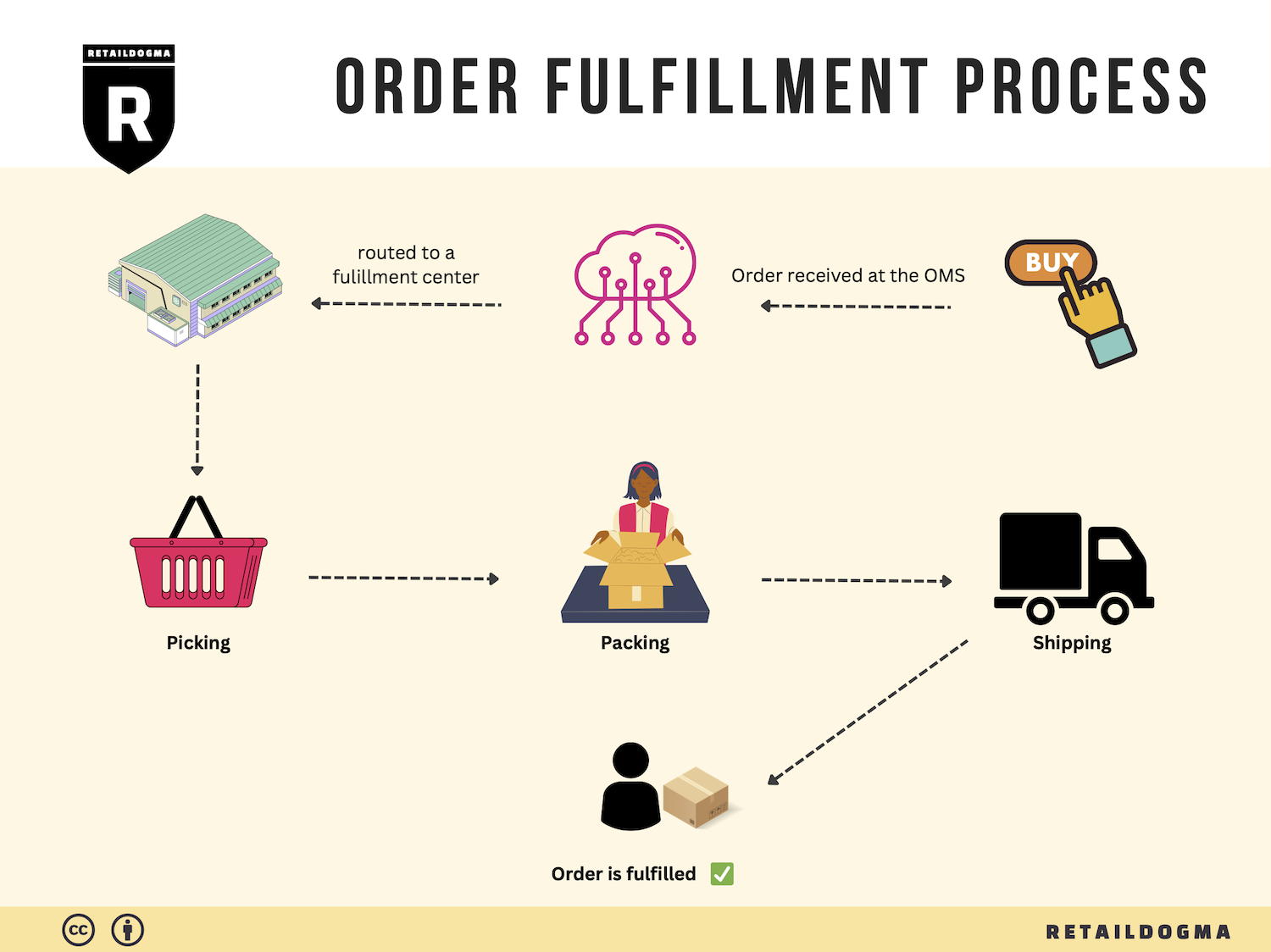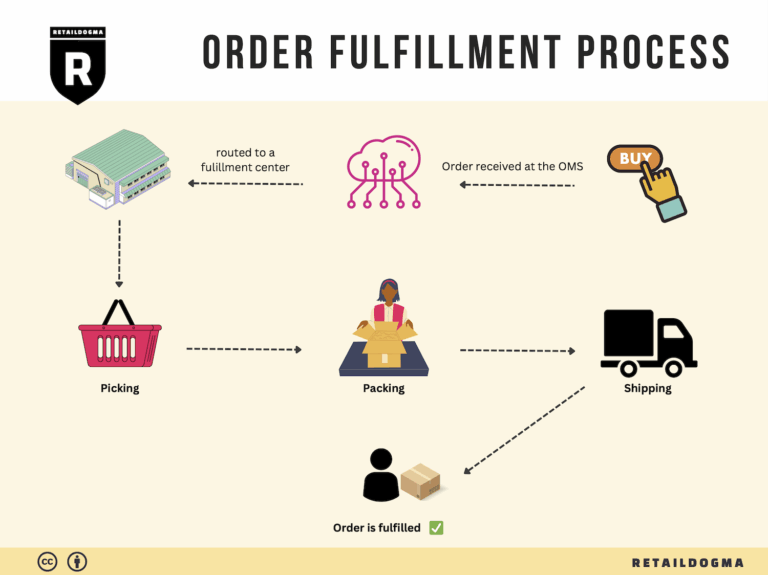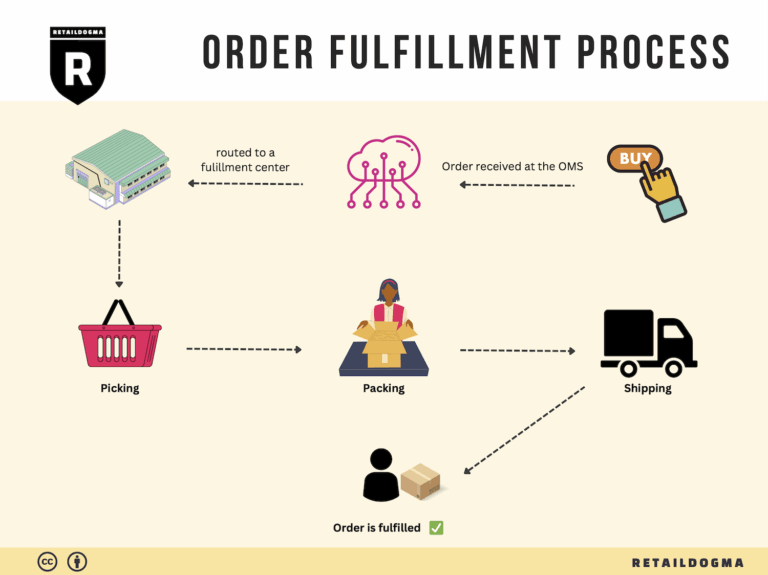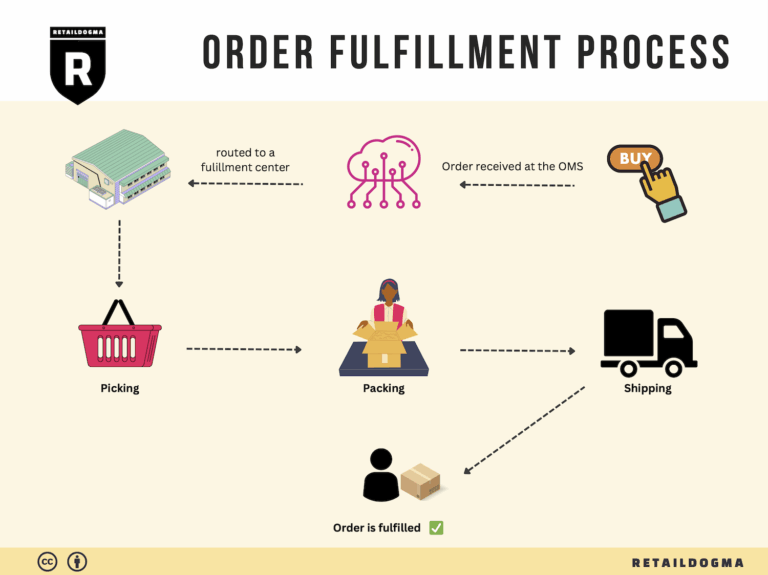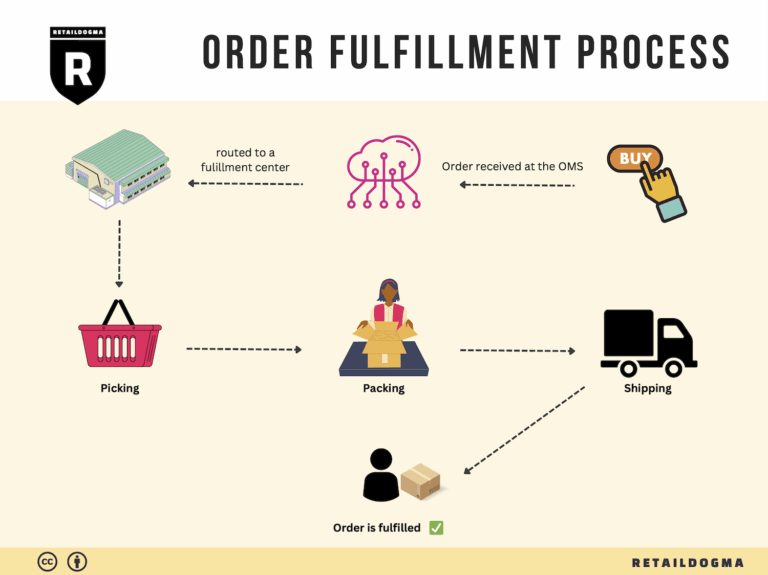What Is A Fulfillment Center? A Complete Guide (2025)
What is E-commerce Fulfillment? An Introduction for Growing Businesses
Understanding E-commerce Fulfillment
As an online business owner, the excitement of generating sales can quickly turn into a daunting challenge when it comes to fulfilling those orders. Many entrepreneurs find themselves overwhelmed with the intricacies of packing, shipping, and managing inventory, which can detract from focusing on growth strategies and customer engagement. This is where e-commerce fulfillment comes into play—a crucial process that ensures your products reach customers efficiently and effectively.
At its core, fulfillment is the process of getting a product to a customer after they’ve made a purchase. It encompasses everything from receiving inventory and storing products to picking, packing, and shipping orders. For growing businesses, understanding and optimizing this process can be the key to enhancing customer satisfaction and scaling operations without sacrificing quality.
In this guide, we will explore various fulfillment models available to e-commerce businesses, including Third-Party Logistics (3PL) and Fulfillment by Amazon (FBA). Each model has its unique advantages and can significantly impact your operational efficiency and cost structure. We will delve into the core services provided by fulfillment partners, such as inventory management, order processing, and returns handling, giving you a comprehensive view of what to expect from these partnerships.
Choosing the right fulfillment partner is a critical decision that can influence your business’s overall success. We will outline key considerations for selecting a fulfillment provider, including their capabilities, technology integration, and customer service. Additionally, understanding the pricing structure of fulfillment services is essential for maintaining profitability. We will provide insights into how pricing works, what factors to consider, and how to compare different providers effectively.
The goal of this guide is to empower your business to make informed decisions about your logistics strategy. By equipping you with the knowledge to navigate the complexities of e-commerce fulfillment, we aim to help you streamline your operations, enhance customer experiences, and ultimately drive growth. With the right approach to fulfillment, you can transform a potential pain point into a competitive advantage, allowing you to focus on what truly matters—growing your business.
What You’ll Learn In This Guide
- What is E-commerce Fulfillment? An Introduction for Growing Businesses
- The Order Fulfillment Process: From ‘Buy’ Button to Customer’s Door
- Comparing Fulfillment Models: In-House vs. 3PL vs. Dropshipping
- A Deep Dive into Amazon FBA: Pros, Cons, and Who It’s For
- Core Services Offered by Fulfillment Centers
- How to Choose a Fulfillment Partner: A 6-Point Checklist
- Understanding Fulfillment Pricing: A Breakdown of Common Fees
- Frequently Asked Questions (FAQs) about Fulfillment
- Conclusion: Is Outsourcing Fulfillment the Right Move for Your Business?
- Important Disclaimer
The Order Fulfillment Process: From ‘Buy’ Button to Customer’s Door
1. Receiving Inventory
The first step in the order fulfillment process is receiving inventory at the Amazon Fulfillment Center (FC), such as the RYY2 location. When products arrive, they undergo a thorough inspection to ensure they meet quality standards and match the purchase order. This involves checking the quantity, condition, and SKU (Stock Keeping Unit) numbers against the shipment documents.
Importance: Efficient receiving is crucial because it directly affects the accuracy of inventory records and the overall speed of the fulfillment process. Discrepancies at this stage can lead to stockouts or overstock situations, which can disrupt order fulfillment and customer satisfaction.
Key Term: SKU (Stock Keeping Unit) – A unique identifier for each product, allowing for precise tracking and management of inventory levels.
2. Warehouse Storage
Once the inventory has been received and verified, it is stored in designated locations within the fulfillment center. Amazon employs advanced warehouse management systems that optimize storage space and facilitate easy retrieval. Products are categorized and assigned specific storage locations based on factors such as size, weight, and demand frequency.
Importance: Proper warehouse storage is vital for maintaining an organized inventory and ensuring that items are easily accessible when orders come in. A well-structured storage system minimizes the time spent locating products, enhancing overall efficiency and reducing the risk of errors during order picking.
Key Term: ABC Analysis – A method of categorizing inventory based on importance and turnover rate, helping to prioritize storage locations.
3. Order Picking
When a customer places an order, the next step is order picking, where items are selected from their storage locations. Warehouse associates use pick lists, which detail the items and their corresponding locations within the warehouse. Technologies such as handheld scanners or pick-to-light systems may be employed to streamline this process.
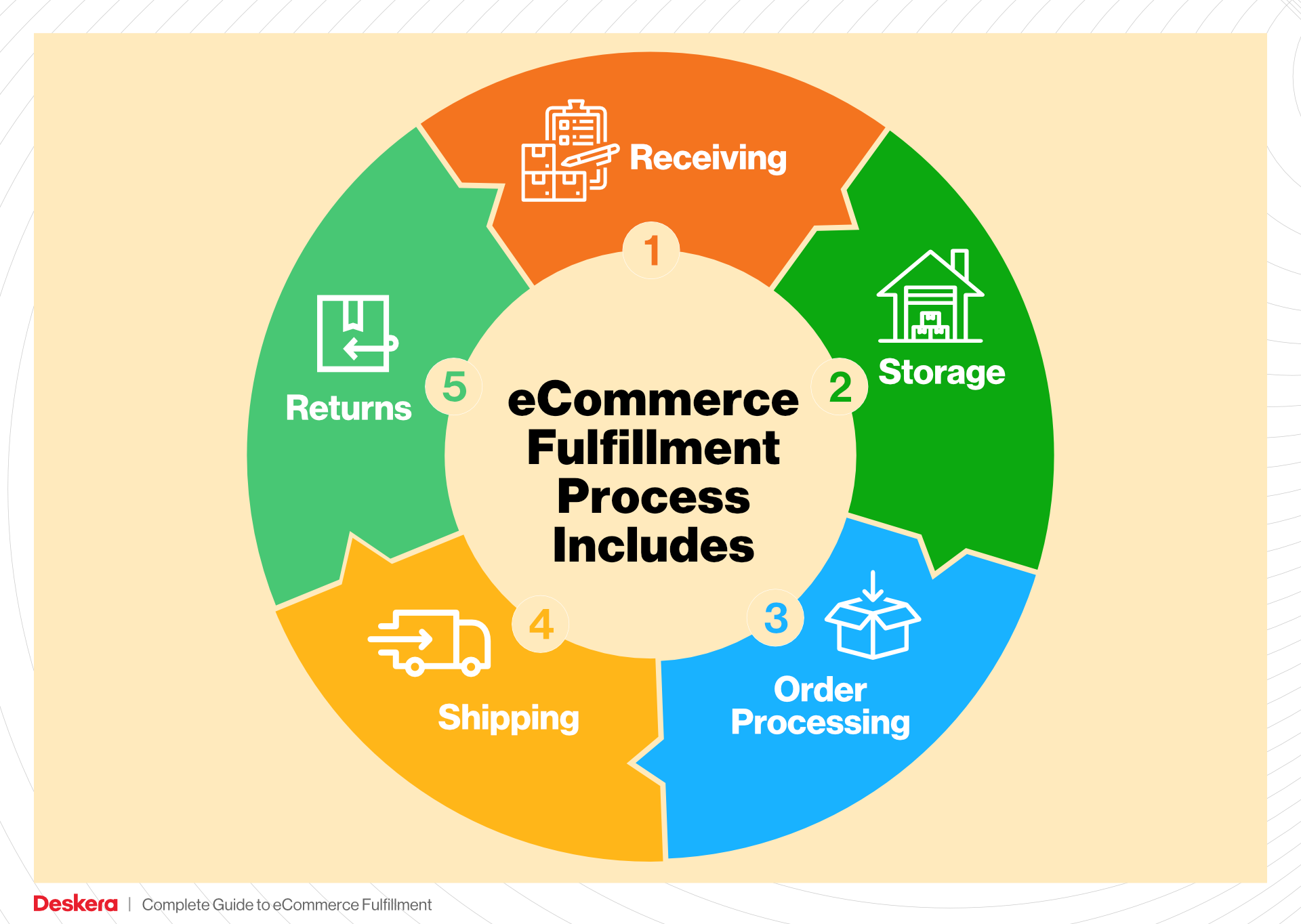
Importance: Order picking is a critical phase in the fulfillment process as it directly impacts order accuracy and speed. Errors in picking can lead to customer dissatisfaction and increased return rates. Efficient picking processes contribute to quicker turnaround times, which is essential for maintaining competitive advantage in e-commerce.
Key Term: Pick Lists – Documents or digital tools that guide warehouse staff on which items to retrieve for a particular order.
4. Order Packing
After the items are picked, they move to the packing station. Here, products are carefully packaged to ensure they arrive at the customer’s doorstep in pristine condition. This involves selecting appropriate packaging materials, adding protective cushioning, and labeling the packages with shipping information.
Importance: Effective packing is essential not only for protecting the product during transit but also for optimizing shipping costs. Well-packed orders reduce the likelihood of damage, returns, and customer complaints. Moreover, the use of branded packaging can enhance the customer experience and promote brand recognition.
Key Term: Packaging Optimization – The process of selecting the most efficient packaging materials and methods to minimize costs and environmental impact while ensuring product safety.
5. Shipping & Delivery
The final step in the fulfillment process is shipping and delivery. Once orders are packed, they are handed over to shipping carriers for delivery to the customer. Amazon’s extensive logistics network, including partnerships with various carriers, ensures that packages are routed efficiently to reach customers as quickly as possible.
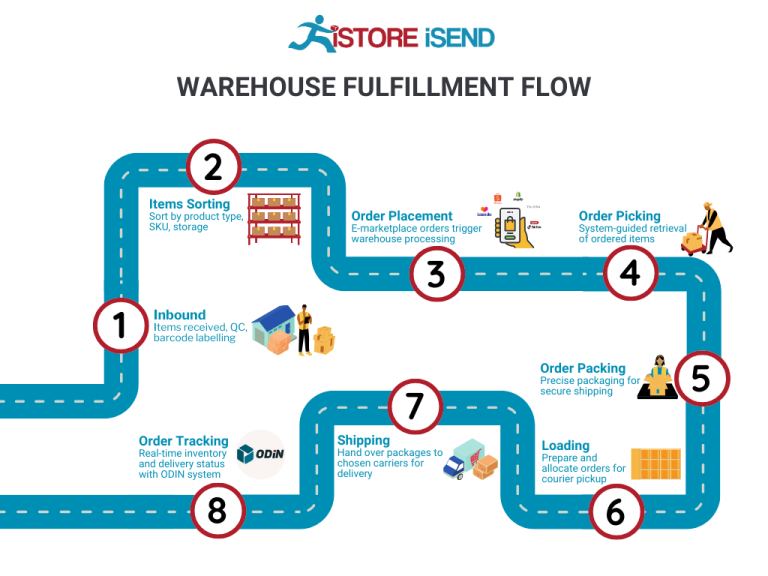
Importance: Timely and accurate delivery is paramount for customer satisfaction and loyalty. The shipping experience can significantly influence a customer’s perception of the brand and their likelihood of repurchasing. Real-time tracking updates are also critical as they keep customers informed about their order status.
Key Term: Last-Mile Delivery – The final step of the shipping process, where the package is transported from a local distribution center to the customer’s door, often the most complex and costly part of the logistics chain.
By understanding and optimizing each step of the order fulfillment process, e-commerce business owners and operations managers can enhance their logistics strategies, improve customer satisfaction, and ultimately scale their operations effectively.
Comparing Fulfillment Models: In-House vs. 3PL vs. Dropshipping
Fulfillment Model Comparison
| Model | Who Handles Inventory | Best For (Business Stage) | Key Advantage | Key Disadvantage |
|---|---|---|---|---|
| In-House Fulfillment | The business itself | Startups to Established | Full control over inventory and processes | High overhead costs and operational complexity |
| Third-Party Logistics (3PL) | Third-party providers | Scaling businesses | Cost-effective and scalable solutions | Less control over inventory management |
| Dropshipping | Supplier or manufacturer | Startups and SMBs | Low startup costs and minimal risk | Lower profit margins and dependency on suppliers |
In-House Fulfillment
In-house fulfillment involves managing your own inventory, storage, and shipping processes. This model is often chosen by businesses that want complete control over their operations, from inventory management to the customer experience. Companies that opt for in-house fulfillment typically invest in warehousing, staff, and logistics technology, allowing them to tailor operations to their specific needs. This can be beneficial for businesses that have unique product handling requirements or want to maintain a strong brand identity throughout the fulfillment process.
However, while having full control can be advantageous, it also comes with significant challenges. In-house fulfillment requires substantial capital investment in infrastructure and labor, which can strain finances, especially for startups. Additionally, managing logistics in-house can become operationally complex as businesses scale, leading to potential inefficiencies. As a result, many companies find that the initial benefits of in-house fulfillment can diminish as they grow, making it essential to periodically evaluate whether this model remains the best choice.
Third-Party Logistics (3PL)
Third-party logistics (3PL) refers to outsourcing the fulfillment process to specialized service providers. This model is particularly well-suited for businesses that are looking to scale without the burden of managing logistics in-house. 3PL providers handle everything from warehousing and inventory management to shipping and returns, allowing businesses to focus on their core competencies such as marketing and product development.
One of the primary advantages of using a 3PL is cost efficiency. By leveraging the infrastructure and expertise of a logistics partner, businesses can save on overhead costs associated with maintaining their own warehouses and logistics staff. Additionally, 3PLs often have established relationships with carriers, which can lead to better shipping rates and faster delivery times. However, the trade-off is a loss of control over inventory and fulfillment processes. Businesses must carefully select a 3PL partner that aligns with their needs and values, as poor service can negatively impact customer satisfaction.
Dropshipping
Dropshipping is a fulfillment model where the retailer does not keep products in stock. Instead, when a retailer sells a product, they purchase the item from a third-party supplier who then ships it directly to the customer. This model is particularly appealing to startups and small to medium-sized businesses (SMBs) due to its low barriers to entry. Entrepreneurs can launch an e-commerce store without the need for significant upfront investment in inventory.
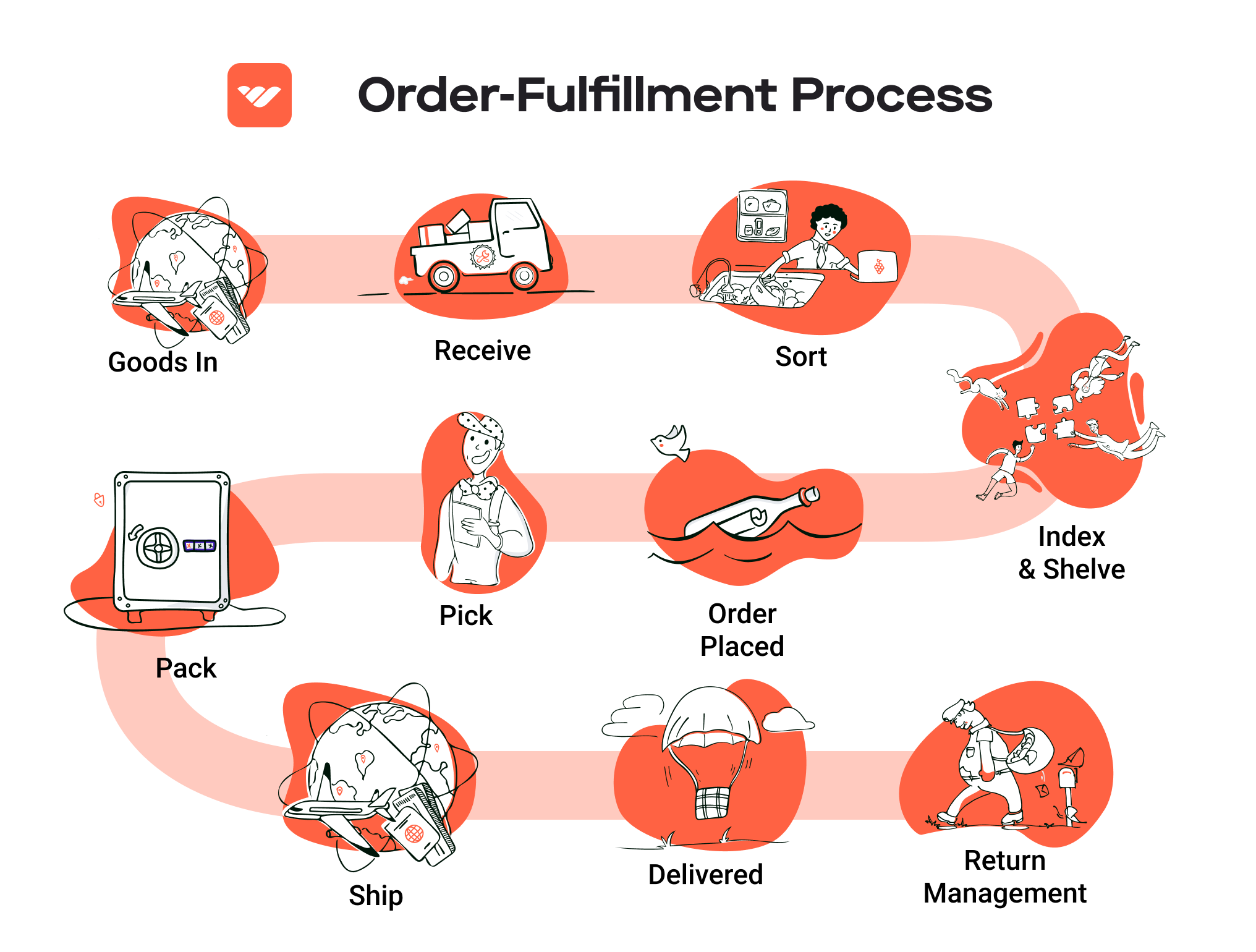
The key advantage of dropshipping is the minimal financial risk involved. Since retailers don’t purchase products until they have made a sale, they can avoid the costs associated with unsold inventory. This allows for a more flexible business model, enabling retailers to test new products without the fear of incurring losses. However, dropshipping also has its drawbacks. Profit margins can be lower compared to traditional retail due to the fees charged by suppliers. Furthermore, retailers must rely heavily on their suppliers for product quality and shipping, which can affect customer satisfaction if not managed properly. As such, businesses need to conduct thorough due diligence when selecting suppliers to mitigate risks associated with this model.
Conclusion
Choosing the right fulfillment model is critical for e-commerce businesses aiming to scale effectively. Each model—In-House Fulfillment, 3PL, and Dropshipping—comes with its own set of advantages and disadvantages that can significantly impact operations and customer satisfaction. Business owners should consider their current needs, growth projections, and resource availability when deciding which model aligns best with their strategic goals. By carefully evaluating these factors, e-commerce businesses can optimize their logistics and fulfillment processes to better serve their customers and drive growth.
A Deep Dive into Amazon FBA: Pros, Cons, and Who It’s For
Understanding Fulfillment by Amazon (FBA)
Fulfillment by Amazon (FBA) is a service offered by Amazon that allows sellers to store their products in Amazon’s fulfillment centers. Amazon takes care of storage, packaging, and shipping of products to customers, as well as handling customer service and returns. This service enables sellers to leverage Amazon’s vast logistics network, making it easier to reach a global audience while focusing on their core business activities.
How FBA Works
-
Inventory Storage: Sellers send their products to Amazon’s fulfillment centers. Each product is assigned a unique identifier, and inventory is tracked through Amazon’s system.
-
Order Fulfillment: When a customer orders a product, Amazon picks, packs, and ships the item on behalf of the seller. This process is streamlined and efficient, typically resulting in fast delivery times.
-
Customer Service: Amazon manages customer inquiries and handles returns for FBA items. This means that sellers do not need to worry about providing customer service for their products.
-
Sales Channels: Sellers can list their products on Amazon and other sales channels, benefiting from Amazon’s trusted platform while also reaching customers through their own websites or other marketplaces.
-
Prime Eligibility: Products fulfilled through FBA are eligible for Amazon Prime, which attracts a larger customer base looking for fast and free shipping options.
Pros of Fulfillment by Amazon (FBA)
-
Prime Eligibility: One of the biggest advantages of FBA is that it allows sellers to offer Prime shipping. This can significantly boost sales as many customers prefer the fast shipping options that come with Amazon Prime.
-
Customer Trust: Selling through Amazon’s platform enhances credibility. Customers are more likely to purchase from sellers that utilize FBA because they trust Amazon’s brand, customer service, and return policies.
-
Multi-Channel Fulfillment: FBA is not limited to Amazon sales. Sellers can fulfill orders from other platforms (like eBay or their own websites) through FBA, allowing for a streamlined logistics process across multiple sales channels.
-
Scalability: FBA allows businesses to scale rapidly without the need for investing heavily in their own warehousing or logistics. This flexibility is vital for growing e-commerce businesses that experience fluctuating demand.
-
Reduced Operational Burden: By outsourcing logistics, sellers can focus more on product development, marketing, and customer engagement rather than worrying about shipping, returns, or customer service.
Cons of Fulfillment by Amazon (FBA)
-
High Fees: While FBA offers many advantages, it comes with costs that can eat into profit margins. Sellers must pay for storage fees, fulfillment fees, and additional charges for long-term storage. These costs can add up, especially for slow-moving inventory.
-
Strict Inventory Rules: Amazon has specific requirements for inventory management, including packaging and labeling standards. Sellers must adhere to these rules to avoid penalties or having their products returned.
-
Commingling Risks: When products are commingled, items from different sellers with the same SKU can be mixed together. This can lead to issues if customers receive products that do not match their expectations, potentially harming a seller’s reputation and resulting in negative reviews.
-
Limited Control: Once products are in Amazon’s warehouses, sellers have limited control over their inventory and shipping processes. This can be challenging for those who prefer to manage their logistics more closely.
-
Dependency on Amazon: Relying on Amazon for fulfillment can create a dependency that may not be sustainable long-term. Sellers risk significant disruption if Amazon changes its policies or if there are issues within the fulfillment network.
Who is FBA Best For?
Fulfillment by Amazon is particularly well-suited for:
-
Small to Medium-Sized Businesses: Companies that do not have the infrastructure to handle logistics and customer service can benefit significantly from FBA, allowing them to focus on growth.
-
E-commerce Entrepreneurs: Those looking to enter the e-commerce space can use FBA as a way to quickly establish a presence on Amazon without the heavy lifting associated with fulfillment.
-
Brands with Seasonal Products: Businesses that experience seasonal spikes in demand can utilize FBA to manage inventory without the need for a permanent warehousing solution.
-
Sellers with High Turnover Products: For products that sell quickly, the benefits of FBA often outweigh the costs, allowing sellers to maximize profits while minimizing logistical headaches.
-
Multi-Channel Sellers: Businesses that sell across multiple platforms can streamline their logistics by using FBA to fulfill orders from various channels, reducing complexity.
In conclusion, Fulfillment by Amazon can be a powerful tool for e-commerce sellers seeking to scale their operations. However, it is essential to weigh the pros and cons carefully and consider whether FBA aligns with your business goals and operational capabilities. By understanding the intricacies of FBA, you can make informed decisions that will help your business thrive in the competitive e-commerce landscape.
Core Services Offered by Fulfillment Centers
Inventory Management & Warehousing
Fulfillment centers provide comprehensive inventory management and warehousing services that are crucial for e-commerce businesses aiming to scale efficiently. This service involves the systematic storage, tracking, and management of inventory within a warehouse. Fulfillment centers utilize advanced technology and software to monitor stock levels, manage stock replenishment, and optimize inventory turnover.
Benefits:
1. Real-time Visibility: E-commerce businesses gain access to real-time data on inventory levels, allowing for better decision-making regarding stock purchases and sales strategies.
2. Space Optimization: Fulfillment centers are equipped to maximize storage space, ensuring that products are stored in an organized manner, which minimizes the risk of stockouts or overstock situations.
3. Scalability: As businesses grow, fulfillment centers can easily adjust their storage capacity and services to accommodate fluctuating inventory needs without the necessity of investing in physical infrastructure.
4. Cost Efficiency: By outsourcing inventory management, businesses can reduce overhead costs associated with maintaining their own warehouses, such as staffing, utilities, and maintenance.
Pick and Pack Services
Pick and pack services are at the heart of fulfillment operations. This process involves selecting the right items from inventory (picking) and packaging them appropriately for shipment (packing). Fulfillment centers employ trained staff and efficient systems to ensure that orders are processed quickly and accurately.
Benefits:
1. Speed and Accuracy: Fulfillment centers leverage technology to streamline the picking process, significantly reducing order fulfillment times while minimizing errors in order selection.
2. Customization: Businesses can tailor their packaging to reflect their brand identity, enhancing customer experience and satisfaction. This includes options for branded boxes, inserts, and other promotional materials.
3. Scalability During Peak Seasons: Fulfillment centers can ramp up operations during peak shopping seasons, such as holidays, ensuring that businesses can meet increased demand without compromising service quality.
4. Error Reduction: Automated systems and trained staff help minimize human errors in picking and packing, leading to higher customer satisfaction and fewer returns.
Kitting and Assembly
Kitting and assembly services involve grouping multiple products into a single package or kit, which is particularly beneficial for businesses offering bundled products or promotional items. This service can also include assembling products that require multiple components before shipping.
Benefits:
1. Enhanced Product Offerings: Kitting allows businesses to create unique product bundles that can attract customers and boost sales, especially during promotional periods.
2. Streamlined Operations: By outsourcing kitting and assembly, businesses can focus on core operations such as marketing and sales, while leaving the logistical complexities to fulfillment centers.
3. Cost-Effectiveness: Fulfillment centers can often perform kitting and assembly at a lower cost than in-house operations due to their specialized equipment and expertise.
4. Improved Inventory Control: Kitting allows for better inventory management by consolidating multiple products into a single SKU, simplifying tracking and replenishment processes.
Returns Management (Reverse Logistics)
Returns management, also known as reverse logistics, is a critical service offered by fulfillment centers that focuses on handling product returns efficiently. This process includes receiving returned items, inspecting them for damage, restocking them if possible, and managing the disposition of unsellable items.
Benefits:
1. Customer Satisfaction: Efficient returns processing enhances customer satisfaction, as businesses can quickly manage and resolve return requests, leading to a better overall shopping experience.
2. Cost Recovery: By effectively managing returns, businesses can recover costs associated with returned merchandise, whether through restocking, refurbishing, or recycling items.
3. Data Insights: Fulfillment centers provide valuable analytics on return reasons, enabling businesses to identify trends and make informed decisions to reduce return rates in the future.
4. Compliance and Risk Management: By outsourcing returns management, businesses can ensure that they are compliant with regulations and best practices, reducing the risks associated with handling returned goods.
In summary, partnering with a fulfillment center offers e-commerce businesses a robust suite of services that streamline operations, enhance customer satisfaction, and ultimately drive growth. By leveraging these core services, businesses can focus on their strategic goals while ensuring that logistics and fulfillment are handled by experts in the field.
How to Choose a Fulfillment Partner: A 6-Point Checklist
Location & Warehouse Network
Importance: The geographical location of your fulfillment partner’s warehouses can significantly affect shipping times and costs. A strategically located warehouse network can help you reach your customers faster and reduce shipping expenses.
Questions to Ask:
– Where are your fulfillment centers located, and how do they align with my customer base?
– Do you have a network of warehouses that can provide coverage in key regions?
– How do you manage inventory distribution across your network to optimize shipping?
Technology & Integrations
Importance: Efficient operations rely on robust technology. A fulfillment partner should have a user-friendly platform that integrates seamlessly with your existing e-commerce systems. This ensures smooth order processing, real-time inventory management, and accurate reporting.
Questions to Ask:
– What technology platforms do you use for order management, inventory tracking, and reporting?
– Can your systems integrate with my current e-commerce platforms (e.g., Shopify, WooCommerce, Amazon)?
– How do you handle data security and compliance with customer data regulations?
Specializations (e.g., Cold Storage, Oversized Items)
Importance: Depending on your product range, you may need a fulfillment partner with specialized capabilities. If you deal with perishable goods, oversized items, or fragile products, it’s essential to choose a partner who can handle these specific requirements.
Questions to Ask:
– What types of products do you specialize in fulfilling?
– Do you have the facilities and expertise to handle specific needs, such as cold storage or special packaging?
– How do you ensure compliance with relevant regulations for specialized products?
Scalability & Capacity
Importance: As your business grows, your fulfillment needs will evolve. A good partner should have the capacity to scale operations in line with your growth, whether that means handling increased order volumes or expanding to new markets.
Questions to Ask:
– How do you manage fluctuations in order volume, especially during peak seasons?
– Can you provide examples of how you’ve scaled your operations for other clients?
– What is your process for onboarding new products or services as my business evolves?
Pricing and Contracts
Importance: Understanding the pricing structure and contract terms is crucial for budgeting and avoiding unexpected costs. Transparent pricing can help you assess whether the partner is a good fit financially.
Questions to Ask:
– What is your pricing model (e.g., per order, per item, monthly fees)?
– Are there additional fees for services like returns processing or seasonal storage?
– Can you provide a sample contract for review, and what are the terms for terminating the partnership?
Customer Support & Reviews
Importance: Reliable customer support is essential for resolving issues quickly and effectively. Furthermore, checking reviews and testimonials can provide insights into the partner’s reliability and service quality.
Questions to Ask:
– What type of customer support do you offer (e.g., phone, email, live chat)?
– What are your average response times for customer inquiries?
– Can you provide references or case studies from current clients, particularly those in my industry?
Conclusion
Choosing the right fulfillment partner is a critical decision that can impact your e-commerce business’s efficiency and customer satisfaction. By using this checklist, you can systematically evaluate potential partners based on key factors that align with your business needs. Remember, a successful partnership is built on clear communication, mutual understanding, and a shared vision for growth.
Understanding Fulfillment Pricing: A Breakdown of Common Fees
Initial Setup Fees
When you first start using an Amazon Fulfillment Center like RYY2, you’ll typically encounter initial setup fees. These charges cover the costs associated with onboarding your products into the fulfillment system. This may include creating your seller account, integrating your inventory management systems, and configuring your product listings.
The calculation for initial setup fees can vary based on the complexity of your inventory and the level of integration required. Some fulfillment centers may charge a flat rate, while others might base the fee on the number of SKUs you plan to manage. It’s crucial to ask for a detailed breakdown of these costs during your onboarding process to avoid unexpected expenses.
Receiving Fees
Receiving fees are incurred each time your inventory is delivered to the fulfillment center. These fees cover the labor and resources needed to unpack, inspect, and store your products.
The calculation for receiving fees usually depends on the number of units received or the volume of goods. For instance, a fulfillment center might charge a per-pallet fee or a fee based on the total weight of the shipment. It’s essential to factor these costs into your pricing strategy, especially if you frequently send shipments to the RYY2 center.
Storage Fees (per pallet/bin)
Storage fees are charged for the space your inventory occupies within the fulfillment center. These fees can be calculated based on the number of pallets or bins your products occupy, and they typically vary by location and seasonality.
Most fulfillment centers use a monthly billing cycle for storage fees. For example, you might be charged a flat fee per pallet per month. Additionally, many centers have different rates for standard and long-term storage. Long-term storage fees may apply if your inventory remains unsold for more than six months, encouraging you to manage your stock levels proactively.
Pick & Pack Fees (per item/order)
Pick and pack fees are charged for the process of selecting items from your inventory and packaging them for shipment. This fee is crucial for businesses that experience fluctuations in order volumes, as it directly impacts your operational costs.
Typically, pick and pack fees are calculated on a per-item basis, meaning you’ll pay a fee for each item picked and packed. Some fulfillment centers also offer tiered pricing models that reduce the cost per item as your order volume increases. It’s advisable to analyze your order patterns to understand how these fees will affect your overall fulfillment costs.
Shipping Fees
Shipping fees represent the costs incurred for sending your products to customers. These fees can vary significantly depending on the shipping method chosen (standard, expedited, etc.), the destination, and the weight of the package.
Fulfillment centers often have partnerships with various carriers, which can affect the rates you receive. Some may offer discounted shipping rates based on your sales volume or the total number of shipments. Understanding the shipping fee structure is vital for determining your pricing strategy and ensuring you remain competitive in the marketplace.
Tips for Getting an Accurate Quote
-
Request Detailed Quotes: When seeking quotes from fulfillment centers, ensure you ask for a comprehensive breakdown of all potential fees. This should include initial setup, receiving, storage, pick & pack, and shipping fees.
-
Understand Volume Discounts: Inquire about volume-based discounts for storage and pick & pack fees, as these can significantly lower your costs if you have a high sales volume.
-
Ask About Seasonal Changes: Some fulfillment centers implement seasonal pricing strategies. Understanding how fees might change during peak seasons can help you budget effectively.
-
Review Contract Terms: Carefully review the terms of service and contracts to avoid hidden fees or unexpected costs. Look for clauses that may affect pricing over time.
-
Utilize Technology: Use inventory management software that integrates with your fulfillment partner. This can help you track inventory levels and predict costs more accurately.
By understanding these common fulfillment pricing models and actively managing your logistics strategy, you can optimize your operations and scale your e-commerce business more effectively.
Frequently Asked Questions (FAQs) about Fulfillment
1. What is the Amazon Fulfillment Center RYY2?
The Amazon Fulfillment Center RYY2 is one of Amazon’s warehouses strategically located to facilitate efficient order processing and distribution. It plays a crucial role in the Fulfillment by Amazon (FBA) program, where sellers store their products, and Amazon takes care of storage, packaging, and shipping directly to customers.
2. How does the Amazon Fulfillment Center RYY2 operate?
At RYY2, products are stored, picked, packed, and shipped to customers. When a customer places an order, Amazon’s system identifies the nearest fulfillment center with the product in stock, ensuring faster shipping times. Employees at RYY2 pick the items, pack them securely, and ship them using Amazon’s logistics network.
3. What’s the difference between a warehouse and a fulfillment center?
While both warehouses and fulfillment centers are used for storage, their functions differ significantly. A warehouse is primarily focused on storing goods, whereas a fulfillment center is designed for order processing, packaging, and shipping. Fulfillment centers also integrate technology and logistics to streamline the shipping process and enhance customer service.
4. What is a 3PL, and how does it relate to Amazon Fulfillment?
A Third-Party Logistics provider (3PL) is a company that offers logistics services to businesses, including warehousing, transportation, and order fulfillment. While Amazon’s fulfillment centers like RYY2 serve as in-house logistics solutions for Amazon sellers, some businesses may choose to partner with a 3PL for flexibility, specialized services, or to handle excess inventory.
5. How much do fulfillment services cost at Amazon Fulfillment Center RYY2?
Costs at Amazon Fulfillment Center RYY2 vary based on factors like storage fees, fulfillment fees per unit, and optional services (like labeling or packaging). Typically, sellers pay a monthly storage fee based on the volume of goods stored and a fulfillment fee for each item shipped. It’s advisable to review Amazon’s FBA pricing structure for detailed cost breakdowns.
6. How do I send my products to the Amazon Fulfillment Center RYY2?
To send products to RYY2, you must first create a shipment plan in your Amazon Seller Central account. This involves specifying the products, quantities, and preparing the packages according to Amazon’s guidelines. Once your shipment plan is approved, you can label your packages and ship them directly to the RYY2 address provided by Amazon.
7. What are the advantages of using Amazon Fulfillment Center RYY2?
Using RYY2 offers several advantages, including access to Amazon’s extensive logistics network, faster shipping times, eligibility for Amazon Prime, and improved customer service through streamlined returns and tracking. Additionally, it allows sellers to focus on product development and marketing while Amazon handles the logistics.
8. Can I use Amazon Fulfillment Center RYY2 for international shipping?
Yes, Amazon Fulfillment Center RYY2 can support international shipping. However, you need to set up your products for international marketplaces in your Seller Central account. Amazon will handle customs clearance and shipping logistics, but be aware of the additional fees and regulations associated with international sales.
9. How does inventory management work at Amazon Fulfillment Center RYY2?
Inventory management at RYY2 is largely automated. Amazon uses sophisticated software to track inventory levels, sales trends, and reorder points. Sellers can monitor their inventory levels through Seller Central, receive alerts for low stock, and make decisions based on real-time data to optimize their inventory turnover.
10. What should I do if there’s a problem with my fulfillment at RYY2?
If you encounter issues with fulfillment at RYY2, such as missing inventory or shipping errors, you should contact Amazon Seller Support through your Seller Central account. Provide them with detailed information about the issue, and they will investigate and resolve it according to their policies. Regularly checking your account for notifications can also help you stay informed about potential issues.
Conclusion: Is Outsourcing Fulfillment the Right Move for Your Business?
Key Benefits of Outsourcing Fulfillment
Outsourcing your fulfillment process can be a transformative move for your e-commerce business. The primary advantage is time savings; by delegating logistics to a third-party fulfillment center like Amazon’s RYY2, you can focus on core business activities such as marketing, product development, and customer engagement. This shift allows you to allocate resources more effectively, fostering growth without the burdens of managing complex shipping and inventory tasks.
Scalability is another significant benefit. As your business grows, so do your fulfillment needs. An experienced fulfillment partner can easily adapt to fluctuating order volumes, seasonal spikes, and geographical expansions. This flexibility ensures that you can meet customer demand without compromising service quality, thereby enhancing customer satisfaction and loyalty.
Moreover, outsourcing provides access to specialized expertise. Fulfillment centers often have established processes, advanced technology, and industry knowledge that can streamline your operations. This expertise not only reduces errors but also enhances efficiency, ensuring that products reach customers quickly and reliably.
Choosing the Right Partner for Growth
However, the success of outsourcing hinges on selecting the right fulfillment partner. Evaluate potential partners based on their track record, technology capabilities, and alignment with your business goals. A well-chosen partner will not only support your current needs but also contribute to your long-term growth strategy.
Strategic Call-to-Action
Take the first step towards optimizing your operations by auditing your current shipping processes. Consider whether outsourcing fulfillment could alleviate operational burdens and enhance your growth trajectory. By evaluating your needs and aligning with a capable fulfillment partner, you can position your business for sustainable success in the competitive e-commerce landscape.
Important Disclaimer
⚠️ Important Disclaimer
The information in this guide is for educational purposes. Fulfillment services, pricing, and platform features change frequently. Always conduct your own due diligence and consult with providers directly before making business decisions.
